All
This is a fungal disease also know as leaf blight. It typically affects plants in the spring season, due to cool, wet conditions. It can be identified by the dark colored legions found on the undersides of leaves that must then be removed. Dryer, hotter weather can stop the spread of anthracnose.
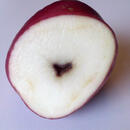
Black heart is a quality problem that affects potatoes when they are deprived of oxygen. High temperatures and excess water in the soil contribute to this condition in the field. Potatoes can also develop this problem in transit or storage if they are exposed to very hot or very cold temperatures.
Bloom drop, or as it’s sometimes called—blossom drop, is when the bloom or flower of a vine crop (cucumbers, melons, gourds, and tomatoes to name a few) drops off, preventing the plant from producing fruit. Once the flower is pollinated, the plant grows a cucumber or tomato (or whatever type of plant it is) in that location. If the bloom falls off, nothing can grow.
The most frequent cause of this problem is inclement growing conditions (extreme hot or cold temperatures, high winds, or torrential rainfall). Commercial growers work on very set schedules, so when freezing temperatures cause the majority of a crop to experience bloom drop, the entire harvest is delayed until new flowers appear and new fruit has time to mature. This often creates a future supply gap and drives up market prices.
For more information about bloom (or blossom) drop, see Purdue and University of Florida.
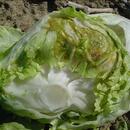
Caused by the fungus Rhizoctonia solani, bottom rot is identified by sunken, reddish-brown spots on the bottom of plants, most notably, lettuces. If the fungus only affects the outer leaves they can be trimmed, but if it has invaded whole heads, they cannot be used. The spots most typically occur when leaves touch soil that contains the fungus and when temperatures are high and air is humid.
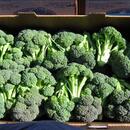
Bracketing is a cosmetic defect caused by inconsistent growth in broccoli plants. It typically occurs when there are large swings in temperatures, resulting in growth being stopped then started rapidly. The biggest problem caused by bracketing is that it prevents crowns from being trimmed to a short- or Asian-cut crown length. If the crown were to be cut, the florets would fall off the stalk.
The Brix scale was named for a 19th century German named A.F.W. Brix. This system is used in the United States to measure the sugar content in fruit, most notably citrus, grapes, and melons.
A pathogen that invades the lining of the small intestine. C. jejuni is the most commonly-isolated species.
Typical Symptoms
- Fever
- Severe abdominal cramps
- Bloody diarrhea
Most at risk
- Young children
- The elderly
- The immunocompromised
How is it spread?
- Contaminated food typically undercooked poultry or water
- Occasionally through person-to-person contact
-
Examples:
- If infected person does not wash his/her hands properly after using the toilet, can be passed along by physical contact or by handling food
- If contaminated water (through human or animal feces) touches food at any stage (irrigation, washing, rinsing, etc.), contamination can also occur
What is it?
Clostridium perfringens or C. perfringens is the third most common cause of foodborne illness in North America, causing an estimated one million cases per year. These spore-forming bacteria can be found as a normal component of decaying plant life, marine sediment, soil, and in the intestinal tract of many animals, including humans.
How is it spread?
They prefer environments with little to no oxygen and typically cause illnesses when large quantities are ingested through inadequately cooked meat and poultry or in prepared food that has been left at the wrong temperature for too long. These bacteria thrive between 40-140˚F (aka the danger zone); they cannot grow at proper refrigerator or freezer temperatures.
Typical Symptoms
Symptoms include abdominal cramping, diarrhea, vomiting, and fever. It cannot be passed from one person to another. Most occurrences resolve themselves within 24 hours, but extreme cases of Type C can result in death.
Most at risk
Young children, pregnant women, the elderly, and immunocompromised persons are most at risk, but given the right conditions, anyone can suffer this illness.
For more information, see:
http://www.cdc.gov/foodsafety/clostridium-perfingens.html
http://en.wikipedia.org/wiki/Clostridium_perfringens
http://www.foodsafety.gov/poisoning/causes/bacteriaviruses/cperfringens/index.html
Cold chain management is the control and maintenance of storage temperatures to prevent product deterioration and bacteria growth, as well as to prolong shelf-life; it is the management of the real-time series of events that occur from seed to fork.
The cold chain combines all of the links between transport and storage
- From harvest point to transportation (refrigerated trucks)
- Transportation to production or shipping facilities
- Production/shipping facilities to distribution warehouses
- Distribution warehouses to foodservice operators' coolers
- Storage inside foodservice operators' coolers until time of plating
In 1914, the Public Health Service first used coliform as a general name to indicate members of the Enterobacteriaceae family, a broad class of indicator microorganisms. Coliforms can be used to show the presence of more dangerous disease-causing bacteria or viruses. They can also be found in the intestinal tracts of humans and animals, feces, water, soil, and vegetation.
Coliforms are normally present on raw plants; positive testing for them does not necessarily indicate the produce has come in contact with feces.
Are All Coliforms Dangerous?
- There are many types of coliforms, not all make people sick, but some do
- Since there are so many types, exposure has effects varying from nothing to serious illnesses
How are they spread?
- Frequently spread in hospital environments
- Fruits or vegetables may become contaminated from soil or manure fertilizers during growing or harvesting periods
- Contaminated water can pass bacteria if it touches food at any stage (irrigation, washing, rinsing, processing, etc.)
What is it?
Cryptosporidium parvum, also known as crypto, is a microscopic protozoa that can cause a parasitic disease in the intestines of mammals, including humans. It is considered the most significant waterborne pathogen in developed countries. In fact, it sickened 403,000 people in Milwaukee, Wisconsin in 1993. The protozoa itself is protected by a thick outer shell that keeps it alive outside the body for long periods; it is also chlorine resistant.
How is it spread?
Cryptosporidium is typically spread by drinking contaminated water, eating infected food, or being contaminated by feces. It only takes two to ten cryptosporidium parasites to cause infection.
Typical Symptoms
Symptoms include acute, non-bloody diarrhea, nausea, vomiting, abdominal pain, fatigue, and loss of appetite.
Most at risk
Young children, pregnant women, the elderly, and immunocompromised persons are most at risk, but given the right conditions, anyone can suffer this illness.
For more information, see:
http://en.wikipedia.org/wiki/Cryptosporidium_parvum
http://www.cdc.gov/parasites/crypto/
http://www.foodborneillness.com/cryptosporidium_food_poisoning/
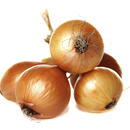
Fresh-run onions exhibit light color and flaky skin; expect typical cured storage-onion characteristics to include globe-like shape, firm texture, dark skin, and single centers.
What is Cyclospora?
A one-celled parasite spread by water or food contaminated with infected feces.
Typical Symptoms
- Severe abdominal cramps and diarrhea
- Loss of appetite and substantial weight loss
- Bloating, gas, nausea
- Vomiting, fever, and fatigue
Most at risk
- All ages are at risk for infection
How is it Spread?
- Contaminated food or water
A double center is a term used when two onions grow from one root. This is typically undesirable in the commercial market, as it makes it more difficult to cut onions into rings or consistent slices.
What is E. Coli?
- An abbreviation for the bacterium Enterobacteriaceae family called Escherichia coli
- "Escherich" was the scientist who isolated the bacteria in 1885
- Many types exist—some healthy, some dangerous; the most common harmful strain is E. coli 0157:H7
- Organisms are harbored in animal and human feces
- The most common sources are ground beef and raw milk; less commonly found in produce
Typical Symptoms
- Severe abdominal cramps
- Bloody diarrhea
- Possible organ damage and/or death
Most at risk
- Young children
- Elderly and/or immunocompromised persons
How is it Spread?
- Contaminated food or water
- Person-to-person contact
- Examples:
- If an infected person does not wash his/her hands properly after using the toilet, bacteria can be passed by physical contact or by handling food
- If water contaminated with E. coli (through animal or human feces) touches food at any stage (irrigation, washing, rinsing, etc.), the food may also become contaminated
Enterococcus are naturally occurring intestinal bacteria that can be found in humans, animals, plants, soil, and water. It is one of the most commonly occurring hospital-acquired illnesses, but can also be a foodborne illness. Enterococcus faecalis is the most commonly-isolated species.
Typical Symptoms
- Fever
- Urinary tract infection
- Diarrhea
- Diverticulitis
- Meningitis (rare)
Most at risk
- Young children
- The elderly
- The immunocompromised
How is it spread?
- Most frequently spread in hospitals
- Can be spread through contaminated plants, soil, and water
-
Occasionally through person-to-person contact
- Examples:
- If an infected person does not wash his/her hands properly after using the toilet, it can be passed along by physical contact or by handling food
- If contaminated water touches food at any stage (irrigation, washing, rinsing, etc.), contamination can also occur

Usually used in reference to lettuces, epidermal peeling is a quality defect caused by freezing temperatures. The outer layer of the leaf peels away, much like chapped lips. It is a purely cosmetic defect and does not affect flavor or quality.
What is it?
E. Coli is broadly classified by O and H antigens. For instance, the most well-known E. Coli strain is O157:H7. Outbreaks involving non-O157 Shiga toxin-producing E. Coli (STEC) are rarer (or perhaps under-reported), but have been increasing since the 1990s.
How is it spread?
The bacterium can be spread person to person or by contaminated foods. The major source for humans is cattle feces.
Typical Symptoms
Symptoms are similar to those involved in E. Coli O157 (abdominal cramping, bloody diarrhea, and possible organ damage), but can also include hemolytic uremic syndrome (HUS), a life-threatening complication that can cause kidney failure. Incubation can take as long as ten days or as few as one.
Most at risk
Young children, pregnant women, the elderly, and immunocompromised persons are most at risk, but given the right conditions, anyone can suffer this illness.
For more information, see:
http://www.about-ecoli.com/non_o157_STEC/#.VFKUPfnF_d0
What is it?
Ethylene is an odorless, colorless gas that is produced naturally by fruits and vegetables. It can increase the pace at which fresh produce ripens, shortening shelf-life.
Some of the highest producers of ethylene are apples, avocados (ripe), bananas, cantaloupe, kiwi fruit, pears, and stone fruit.
Almost all fresh produce is at least somewhat sensitive to ethylene gas. In storage, be sure to isolate the high producers from the rest of your fruits and vegetables.
Food security refers to the monitoring and inspection of our food supply to reduce its vulnerability to targeted attacks. Areas covered include domestic production, imports, and distribution. Additional regulation of these activities is currently under consideration.
What is Bioterrorism?
- Bioterrorism is the act of any individual, group, or government to spread disease pathogens with the intent to harm others.
- Many now believe that terrorists could attack the US food supply.
The Department of Homeland Security
- The Department of Homeland Security includes the Coast Guard, Customs Service, Immigration and Naturalization Service, Border Patrol, Secret Service, Federal Emergency Management Agency, and the Transportation Administration.
- The CIA and FBI (reporting to the Department of Justice) are separate organizations.
For more information about bioterrorism, see:
Centers for Disease Control and Prevention
www.foodsafety.gov
Institute for Biosecurity
What are Genetically Modified Organisms?
A genetically modified organism (GMO) is any item that has been altered at the molecular level.
In agriculture, GMOs are typically created in order to boost yields, improve quality, and repel insects.
Pros
- An international panel of scientists found that genetically altered crops are as safe as traditional crops.
- Genetic modification allows crops to be grown with additional vitamins and nutrients.
- Crops can also be engineered to repel certain insects.
- Foods might be grown in places that are today ridden with drought or floods.
Cons
- Many scientists believe that GMOs increase new toxins and allergens in foods.
- May increase the use of chemicals.
- May create herbicide-resistant weeds.
- May disturb the ecological balance.
For More Information:
Biotechnology Industry Organization
Union of Concerned Scientists
Public Broadcasting Service
Pew Initiative on Food and Biotechnology
What are GAPs?
Good Agricultural Practices, or GAPs, are the FDA guidelines for minimum sanitary and safety requirements to be used while growing and harvesting crops. These requirements include the areas of:
- Site selection
- Manure handling
- Irrigation methods
- Equipment, field, and storage sanitation
- Worker hygiene and training
- Proper storage temperature maintenance
For example, before a farmer begins planting crops, he/she will create a blueprint of the specific practices needed to maintain the safety of all those connected with the operation, especially the end-user.
What are GMPs?
Good Manufacturing Practices, or GMPs, are the minimum sanitary and processing requirements issued by the FDA (under section 520 of the Food, Drug and Cosmetic Act) that a company must uphold.
Within the foodservice industry these typically consist of maintaining:
- A clean kitchen
- A safe water supply
- Good personal hygiene of all employees
- A consistent and thorough employee training system
- An up-to-date pest control program
Most foodservice industry companies use GMPs to write more specific Standard Operating Procedures (SOPs) and to implement a comprehensive food safety program.
What is HACCP?
Hazard Analysis Critical Control Point, or HACCP, is a systematic approach to food safety within a facility; it focuses on the prevention of biological, physical, and chemical risks by establishing checkpoints at risk-related areas throughout a facility. For example, one might test a fruit processing plantÕs rinsing water at regular intervals to ensure that bacteria is kept below minimum allowance level.

Hollow core is a broccoli quality problem caused by rapid growth, usually when warm weather follows rain. This cosmetic defect occurs when the outer layers of the stalk grow faster than the middle layers, creating a cavity in the center of the stalk.
Hollow heart indicates an open cavity in the center of a potato that turns brown in more severe cases. Its cause is debated: some report it is a physiological disorder caused by not properly rotating fields (planting the same crop in the same lot for multiple growing cycles); others report it is caused by irregular or excessive watering (accelerated by late season rains). Packing sheds use ultrasonic machinery to scan and cull out potatoes with excessive hollow heart. A certain amount of hollow heart is allowed as per USDA Good Delivery Guidelines.

Insect pressure is a term indicating the presence of insects in lettuce fields. The number of insects can vary, depending on location and temperatures. Fall is typically the worst time for insect infestations. Many insect populations start in other fields such as cotton and melons; when these crops mature, they move to alternative harvesting areas like lettuce.
Product inspections in the field and post-harvest are fundamental to maintaining the integrity of the Markon First Crop, Ready-Set-Serve, and Markon Essentials brands. Markon believes in the adage "trust, but verify," so to supplement our written specifications, inspectors are at work six days a week to approve or reject potential fields for Markon First Crop lettuce, leaf, strawberry, potato and celery items, plus many other vegetable crops. Broccoli, cauliflower, apples, and onions are also inspected. In-house inspectors visit cold rooms three times per week to monitor post-harvest storage temperatures and weights for leaf, lettuce and many vegetable items.
For more information, please watch the "Day In the Life of a Markon Inspector" video.
What is Integrated Pest Management (IPM)?
An IPM system seeks to implement socially responsible and economically feasible methods of reducing agricultural pests and promoting sustainable agriculture for the preservation of the environment. Management options include
- Cultural: crop rotation
- Mechanical: cultivating beneficial weeds
- Biological: releasing beneficial insects or parasites to control other pests
- Genetic: use of plant disease-resistant varieties
- Chemical: herbicides, insecticides, fungicides
Pros
- Potential for increased production and improved quality of crops
- Lower incidences of pesticides in the environment
- May reduce farming costs
Cons
- Live and/or dead pests in harvested produce
- Time consuming
- Inconsistent results
For information about IPM in general: National Integrated Pest Management Network
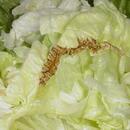
Internal burn is when heat and/or rapid growth causes browning on lettuce's inner leaves; tip burn is the same condition occurring on the outer tips of leaves. Both problems decrease shelf-life and can lead to breakdown within the lettuce head. They are most prevalent in summer months, when temperatures are extremely high. Both conditions are usually caused when there is rapid growth and plants cannot get sufficient quantities of water to various sections of the head.
What is Irradiation?
A process in which high energy rays pass through packaged food. The process destroys dangerous microbes within and on the surface, including foodborne illnesses such as E. coli 0157:H7, Salmonella, Campylobacter, Shigella, Cyclospora, and Listeria. The process also eliminates pests (such as fruit flies) and slows foods' natural ripening process, extending shelf-life. Nutritional changes are insignificant.
Critics claim that studies of irradiated foods are inconclusive or outdated, and that studies point to the mutation of genes in both animals and humans.
What Methods are Used in the U.S.?
-
Electronic beam, or e-beam technology
- Most prevalent type used today
- Used by over 75% of ground beef producers and 50% of poultry processors
- Purchased by U.S. Postal Service to safeguard mail supply
- No radioactivity is involved
- Turned off and on with a switch
- In use for 15 years
-
X-Ray technology
- Most used in the irradiation of produce
- Stronger version of the medical x-ray machine (can penetrate deeper than e-beam, but not as deep as gamma rays)
- No radioactivity is involved
- Turned off and on with a switch
- More effective than e-beams on products that have high water density or inconsistent shapes (such as most fruits and vegetables)
-
Gamma ray radiation
- In produce industry, most often used on dried herbs and spices
- Also used in medical supplies, dental equipment, and household products
- Rays are emitted by radioactive substance (either Cobalt 60 or Cesium 137)
- Elements give off high-energy photons that can penetrate solids
- Gamma rays do not make food, or anything else, radioactive
- In use for over 30 years
- Does use radioactive materials
Foods Currently Approved for Irradiation
- Tropical Fruits & Vegetables, Imported (2002, USDA)
- Meat (1997 FDA, 1999, USDA)
- Poultry (1990, FDA, 1992, USDA)
- Herbs and spices (1986, FDA)
- Fruits and vegetables (1986, FDA)
- Pork (1986, FDA)
- White potatoes (1964, FDA)
- Wheat flour (1963, FDA)
Does Markon Sell Irradiated Produce?
At this time, no Markon branded products are irradiated. In general, the degree of irradiation needed to kill pathogens in produce can damage it (for example, cause lettuces to wilt).
For More Information: Centers for Disease Control and Prevention
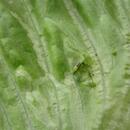
Leaf miner problems include the larvae of moths, flies, and beetles that feed on leaves, hence they 'mine' the plant. Evidence of this problem includes spots, discoloration, and pitting. In lettuces, the leaf miner typically feeds on the lower leaves that can be trimmed.
What is it?
One of the most virulent foodborne pathogens, Listeria monocytogenes is indicated in more than 1,600 illnesses each year in the United States. It is a non-spore forming rod-shaped bacterium that destroys red blood cells and can cause septicemia and meningitis. It’s found in soil, water, and the intestinal tracts of chicken and cows. Because it can live and grow in cold temperatures, it especially dangerous. Listeriosis can be fatal and has even higher death rates than Salmonella.
How is it spread?
Listeriosis is usually spread by eating food contaminated by the bacterium. Foods that are often implicated include deli meats, hot dogs, meat spreads, unpasteurized dairy products, smoked seafood, and raw sprouts.
Typical Symptoms
Fever, fatigue, confusion, muscle aches, and gastrointestinal problems including diarrhea.
Most at risk
Young children, pregnant women, the elderly, and immunocompromised persons are most at risk, but given the right conditions, anyone can suffer this illness.
For more information, see:
http://www.cdc.gov/listeria/definition.html
http://en.wikipedia.org/wiki/Listeria_monocytogenes
http://www.foodsafety.gov/poisoning/causes/bacteriaviruses/listeria/index.html
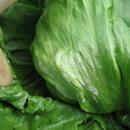
After periods of rain or high humidity, mildew and mold can develop on certain produce items. Products that possess either of these problems are never packed, thus reducing overall supply levels. In some commodities (such as berries and citrus), mold can grow in transit; products should be disposed of immediately upon arrival to prevent cross-contamination.
Introduced in June 2011 to replace the Food Pyramid, MyPlate aims to simplify nutritional needs with a colorful plate diagram divided into four portion-size quadrants (fruits, vegetables, grains, and proteins) and one side portion for dairy products. The diagram is accompanied by the United States Food & Drug Administration's advisory tips, including:
- Balancing Calories
- Enjoy your food, but eat less
- Avoid oversized portions
- Foods to Increase
- Make half your plate fruits and vegetables
- Make at least half your grains whole grains
- Switch to fat-free or low-fat (1%) milk
- Foods to Increase
- Compare sodium in foods like soup, bread, and frozen meals--and choose the foods with lower numbers
- Drink water instead of sugary drinks
See the diagram and additional information at MyPlate.gov.
What is it?
Norovirus is the most common cause of non-bacterial foodborne illness and gastroenteritis each year, with more than 267 million worldwide cases typically reported each year. Although it usually isn’t dangerous and most people recover within days, as many as 200,000 deaths are reported annually.
How is it spread?
It is easily spread from infected people, contaminated foods, water, or by touching contaminated surfaces.
Typical Symptoms
Fever, headache, body aches, loss of taste, dizziness, decrease in urination, stomach pain, nausea, diarrhea, and vomiting.
Most at risk
Anyone can be infected with norovirus, but young children, pregnant women, the elderly, and immunocompromised persons are most at risk. People remain contagious two weeks after recovery.
For more information, see:
What Constitutes Organic?
The USDA's National Organic Standards went into effect on October 21, 2002. The standards, established by the National Organics Standards Board with the help of thousands of industry and public comments, were written over a period of twelve years. Only foods that meet specific standards can display the national label.
What Are the Labeling Laws? The National Organic Program (NOP) has four classifications of certification
-
100% Organic
- Foods must be produced and processed according to specific USDA guidelines
- Guidelines preclude the use of pesticides, chemical fertilizers, antibiotics, hormones, genetically modified ingredients, and irradiation, among other practices
- Foods certified to meet these requirements may display the USDA Organic label and/or the statement "100% Organic"
-
Organic
- Foods must be made with 95% organic ingredients
- The remaining ingredients may be non-agricultural or not commercially available in organic form
- Foods certified to meet these guidelines may display the USDA Organic label (but not the statement "100% Organic")
-
Made With Organic Ingredients
- Foods made with 70-95% organic ingredients can state "Made With Organic Ingredients" on the label (and list up to three organic ingredients), but cannot display the seal
-
Less Than 70% Organic Ingredients
- Such foods may list organic ingredients in the packaging information panel only (not on the principal display panel)
To view the standards in detail, see The National Organic Program.
Pros
- Provides consistent guidelines across the nation
- Increases consumer awareness and confidence
- Predicted to boost sales of organic products
- May increase organic farming worldwide; better for the environment
Cons
- Smaller farmers may not be able to afford the cost of certification
- May lock smaller grower/suppliers out and relegate organics to bigger businesses
- May create incentives to import organic ingredients grown in countries with lower costs of production, i.e. Mexico
How Do The New Organic Laws Affect The Foodservice Industry?
To date most foodservice operators are excluded from these regulations, but foodservice establishments may someday be required to document organic suppliers' certifications in order to mention "organic" on menus or in advertising/promotional materials.
For more information about organics and the USDA standards, visit:
Environmental Working Group
Center For Science in the Public Interest
Organic Trade Association
What is perchlorate?
Perchlorate is an industrial chemical. In the US it is used as primarily as an ingredient in rocket fuel, and in fireworks and flares. Perchlorate has also been found to occur naturally.
Does food contain perchlorate?
- There is a potential for perchlorate contamination in food, most likely through the use of contaminated irrigation water, processing water, and via sources used for bottled water (which is a 'food' regulated by US Food & Drug Administration [FDA]). However, FDA does not know the relative contribution of any particular source of perchlorate to that found in foods. Recognizing this potential for perchlorate contamination in food, FDA conducted exploratory surveys in 2004-2005 to investigate the occurrence of perchlorate in certain foods and is using the data collected in these surveys to develop preliminary assessments of human exposure to perchlorate through food; FDA has additional investigations planned. The FDA found low levels of perchlorate in milk, bottled water, and lettuce. According to the Environmental Working group, a more recent study by the Centers for Disease Control (CDC) found that Òa significant number of women are at risk of thyroid hormone depression from perchlorate exposure.
- Perchlorate at high doses (e.g., therapeutic, pharmacologic) can interfere with iodide uptake into the thyroid gland, interfering with thyroid hormone production. Sustained inhibition of iodide uptake can lead to hypothyroidism, which can lead to metabolic problems in adults and abnormal development in utero and in infancy.
Is perchlorate regulated by the government?
- There is currently no enforceable national drinking water standard for perchlorate either in Canada or in the United States, although various states have implemented guidelines or goals ranging from 1 ppb to 18 ppb for perchlorate in drinking water. In the US, the Environmental Protection Agency (EPA) requires public water systems serving more than 10,000 people (and some smaller systems) to monitor drinking water for the contaminant. As of March 2007, there are several bills under discussion in the US House and Senate requesting that the federal government establish a new drinking-water standard for perchlorate contamination.
What should I do?
- Dr. Robert E. Brackett, Ph.D., Director of the Center for Food Safety and Applied Nutrition Food and Drug Administration stated, "Consumers should not view the low levels of perchlorate in the foods tested as an indicator of the 'risk' of eating certain foods, particularly when many of the foods are important components of a nutritious and balanced diet. Some of these food items are also important sources of iodine. Until more is known concerning perchlorates occurrence in foods, FDA continues to recommend that consumers eat a balanced diet, choosing a variety of foods that are low in trans fat and saturated fat, and rich in high-fiber grains, fruits, and vegetables."
For more information, visit the FDA, CDC, or Health Canada websites.
Why Are Pesticides Used?
Farmers use pesticides to keep diseases, harmful insects, and rodents from infesting and damaging otherwise healthy crops. Without the use of pesticides, it is believed that production in every category of agricultural farming would fall and consumer prices would rise dramatically.
How Are Pesticides Regulated?
- Pesticides are regulated by the Federal Insecticide, Fungicide and Rodenticide Act (FIFRA) and the Food Quality Protection Act (FQPA).
- In order to be approved for use, pesticides must be subjected to more than 120 tests by the Environmental Protection Agency (EPA) to determine their effects on our environment and its inhabitants.
- Federal law requires all pesticide labels to include explicit directions for use and precautions to protect users, consumers, and the environment.
Is It Safe to Eat Produce Grown With The Use of Pesticides?
- The office of the Assistant Surgeon General, the National Cancer Institute, the American Association for Pediatrics, and the USDA, among others, believe that the benefits of eating fruits and vegetables far outweigh any potential risks that might be involved with ingesting foods correctly treated with pesticides.
- "Trying to avoid pesticide residues by avoiding fresh fruits and vegetables altogether is detrimental—not beneficial—to your health," says Edward Growth III, director of Technical Policy and Public Service for Consumers Union and publisher of Consumer Reports magazine.
- Markon concurs with these scientists and the majority of health professionals who support these views.
For More Information:
Centers For Disease Control and Prevention (search "pesticides")
University of California at Davis
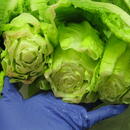
Premature pinking is the appearance of pink or light red areas at the site where fruits and vegetables are cut and signals shortened shelf-life. It is caused by respiration, water loss, and ethylene production.
What is Salmonellosis?
- The most common foodborne illness
- A one-celled organism (usually Typhimurium and Enteritidis) known as salmonella
- Common to the intestinal tracts of many warm-blooded animals, including cows and chickens; sometimes found in the feces of animals and infected humans
- Salmonella Newport was discovered by the National Antibiotic Resistance Monitoring System (NARMS), an interactive agency cooperative consisting of the CDC, FDA, and USDA
Typical Symptoms
- Fever
- Abdominal cramps
- Diarrhea
- Rarely, death
Most at risk
- Young children
- Elderly
- Immunocompromised
How is it Spread?
- Through food contaminated with animal feces
- Through direct or indirect contact with infected individuals
- Examples
- Presence of the bacterium in the water supply
- If an infected person does not wash his/her hands properly after using the toilet, bacteria may be passed by physical contact or by handling food
- Cross-contamination: utensils used on uncooked foods such as meats or eggs could spread the bacteria if then used on produce to be eaten raw
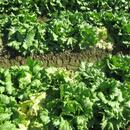
Caused by a type of soil-borne fungus, Sclerotinia prefers moist, humid conditions. The disease mainly affects mature lettuces, as well as other leafy greens, beans, cucumbers, citrus, melons, potatoes, and tomatoes. Symptoms include water-soaked spots on leaves that can become slimy or dry lesions on the stalk, stems, and branches that turn yellow, then brown.
Shatter is a term used to explain what happens when individual grapes become disconnected from the vine, usually through rough handling during harvesting, packaging, transportation, or receiving.
What is Shigellosis?
Any of the four main species of the pathogen Shigella. Most cases occur in regions with sub-standard hygiene and unsafe water supplies. A few cases of Shigellosis are reported in the US each year.
Typical Symptoms
- Fever
- Severe abdominal cramps
- Diarrhea
- In the most serious cases, seizures and death
Most at risk
- Young children
- Elderly
- Immunocompromised
How is it Spread?
- By contaminated food or water
- Person-to-person contact
-
Harbored in human feces only
- Examples
- If an infected person does not wash his/her hands properly after using the toilet, they may pass along the bacteria by physical contact or by handling food
- If contaminated water touches food at any stage (irrigation, washing, rinsing, etc.), food may also become contaminated
Specifications are detailed descriptions of requirements, such as dimensions, materials, defect allowances, etc. In the produce industry, specifications define minimum acceptable levels of quality and, as such, play a key role in product consistency.
Every item packed under the Markon First Crop, Ready-Set-Serve, and Markon Essentials brands must meet or surpass standards written by Markon. Our supplier partners know that if their crops cannot meet the written standards, for whatever reason, they can not pack the brand.
Limes can be affected by stylar end rot when left on the tree too long or in poor weather conditions. It occurs at the end of the individual fruit, usually while on the tree, although much of yellow or brown rot occurs while in storage. The stylar end of the fruit becomes cracked, discolored, and decayed.
"The sweat" is the common term used to describe the natural process of allowing potatoes to shed excess moisture after being harvested. This process takes up to three weeks to complete once potatoes are in dry storage. After the sweat is finished, potato skins will have a smooth, net-like appearance that reflects the typical Russet variety.
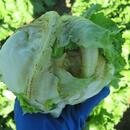
Tomato spotted wilt virus, or TSWV is spread through nine different varieties of tiny winged insects called thrips. The disease affects tomatoes, but also celery, eggplants, peppers, lettuces, and pineapples, among others. Symptoms include bronze leaves, dark spotting, drooping leaves, stunted growth, and reduced yields. If a plant is affected early in the season, it will not produce fruit.
What is it?
A parasitic protozoa that causes the disease toxoplasmosis, this bacterium can infect all warm-blooded animals, but cats are the primary hosts. Some estimates say that up to 30% of the world’s human population has been infected.
How is it spread?
The most common modes of transmissions include consuming raw or undercooked meat containing T. Gondii, ingesting water, soil, or foods contaminated with the feces of infected animals or humans, and in rarer cases through blood transfusions, organ transplants, and transplacental transmission from mother to unborn child.
Typical Symptoms
Infected persons are often asymptomatic as the immune system prevents the disease from causing illness, but some people experience sore lymph nodes and muscle aches. Pregnant women can transmit it to their babies, causing miscarriage, eye and brain damage, vision problems, and seizures. Those with weakened immune symptoms may report confusion, fever, headaches, nausea, poor coordination, and seizures.
Most at risk
Pregnant women and immunocompromised peoples are most at risk.
For more information, see:
What is Trace Back?
Trace back refers to any means of tracing raw materials or ingredients in a product back to their places of origin. In the produce industry, for example, if a box of shredded lettuce were produced and packed under a trace back program, your distributor could trace back the head lettuce to a specific grower-shipper, packing house—even the field of origin. In the event the shredded lettuce was suspected in a case of foodborne illness, all other products sourced from the same origin could thus be readily identified and withdrawn from the market.
What is it?
Umami is a Japanese word meaning delicious flavor; in English it is usually described as having a meaty or savory taste. It was first identified by Professor Kikunae Ikeda of Tokyo Imperial University in 1908 and is generally recognized as the fifth sense (along with sweet, sour, salty, and bitter).
Foods high in free-form glutamate (a naturally occurring result of the breakdown of protein molecules) have a distinct palatability, especially when combined with salt. It is thought that umami-flavored foods taste saltier or sweeter; it also balances bitterness or sour notes. Cooking, most notably roasting, intensifies umami flavors in foods that are naturally high in free-form glutamate.
Some examples are:
- Anchovies
- Beef
- Cabbage
- Carrots
- Cured meats
- Green tea
- Fish sauce
- Mushrooms
- Parmesan cheese
- Potatoes
- Tomatoes
- Sardines
- Seaweed (kombu)
- Shellfish
- Soy sauce
- Spinach
- Sweet potatoes
- Truffles
For more information about umami, see:
What is it?
Vibrio (all non-cholera species incl. vibrio parahaemolyticus and vibrio vulnificus) is a curved-rod shaped bacteria in the same family with cholera that is usually found in saltwater and linked to improperly cooked seafood. Non-cholera vibrio infections have increased in recent years, perhaps because of warming ocean water temperatures and increased salinity. The CDC estimates 45,000 cases per year in the United States, but under-reporting is suspected. Although many other types of foodborne illnesses have decreased in recent years, vibrio cases increased as much as 115% between 1998 and 2010. Coastal regions, especially the Gulf Coast have the most reported cases.
How is it spread?
The majority of vibrio sufferers report eating seafood such as clams, oysters, crabs, and other shellfish. It can also be contracted by ingesting sea water, most likely in the hot summer or early fall months. Natural disasters like Hurricane Katrina contribute to spreading because of contaminated flood water.
Typical Symptoms
Fever, abdominal cramps, headache, vomiting, diarrhea, bloody stool, and myalgia.
Most at risk
Young children, pregnant women, the elderly, and immunocompromised persons are most at risk (especially those with liver disease), but given the right conditions, anyone can suffer this illness.
For more information, see:

White shoulders are caused by uneven ripening and are most evident on strawberries that have been grown during fluctuating weather patterns. Certain enzymes critical to pigmentation within berries are inhibited by extreme heat.
What is it?
Yersinia enterocolitica is an infectious bacterium that is most frequently found in pigs, but can also be harbored in rodents, dogs, horses, cattle, cats, and humans. It causes foodborne illness that is typically resolved on its own without antibiotic treatment.
How is it spread?
A person typically contracts it by ingesting raw or insufficiently cooked pork and other meats, contaminated water, and unpasteurized milk or contact with infected animals and people.
Typical Symptoms
Abdominal pain, bloody diarrhea, swollen lymph nodes, fever, joint pain, skin rash (sometimes), and cramping resembling appendicitis (it is sometimes called pseudo appendicitis).
Most at risk
Young children get this the most, followed by pregnant women, the elderly, and immunocompromised persons, but given the right conditions, anyone can suffer this illness.
For more information, see:
